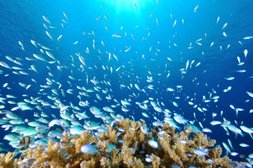option c.2: communities and ecosystems

Essential idea:
- Changes in community structure affect and are affected by organisms.
Nature of science:
- Use models as representations of the real world—pyramids of energy model the energy flow through ecosystems. (1.10)
Understandings
C 2.1 U Most species occupy different trophic levels in multiple food chains.
C 2.2 U A food web shows all the possible food chains in a community
C 2.3 U The percentage of ingested energy converted to biomass is dependent on the respiration rate.
C 2.4 U The type of stable ecosystem that will emerge in an area is predictable based on climate.
C 2.5 U In closed ecosystems energy but not matter is exchanged with the surroundings.
C 2.6 UDisturbance influences the structure and rate of change within ecosystems
Application
C 2.1 A Conversion ratio in sustainable food production practices.
C 2.2 A Consideration of one example of how humans interfere with nutrient cycling.
Skills
C 2.1 S Comparison of pyramids of energy from different ecosystems.
C 2.2 S Analysis of a climograph showing the relationship between temperature, rainfall and the type of ecosystem.
C 2.3 S Construction of Gersmehl diagrams to show the inter-relationships between nutrient stores and flows between taiga, desert and tropical rainforest
C 2.4 S Analysis of data showing primary succession.
C 2.5 S Investigation into the effect of an environmental disturbance on an ecosystem. (Guidance: Examples of aspects to investigate in the ecosystem could be species diversity, nutrient cycling, water movement, erosion, leaf area index, among others.)
Key Terms
Classroom Assignments:
Useful Links
In the News
Theory of knowledge:
- Do the entities in scientists’ models, for example trophic levels or Gersmehl diagrams, actually exist, or are they primarily useful inventions for predicting and explaining the natural world?
Video Clips
